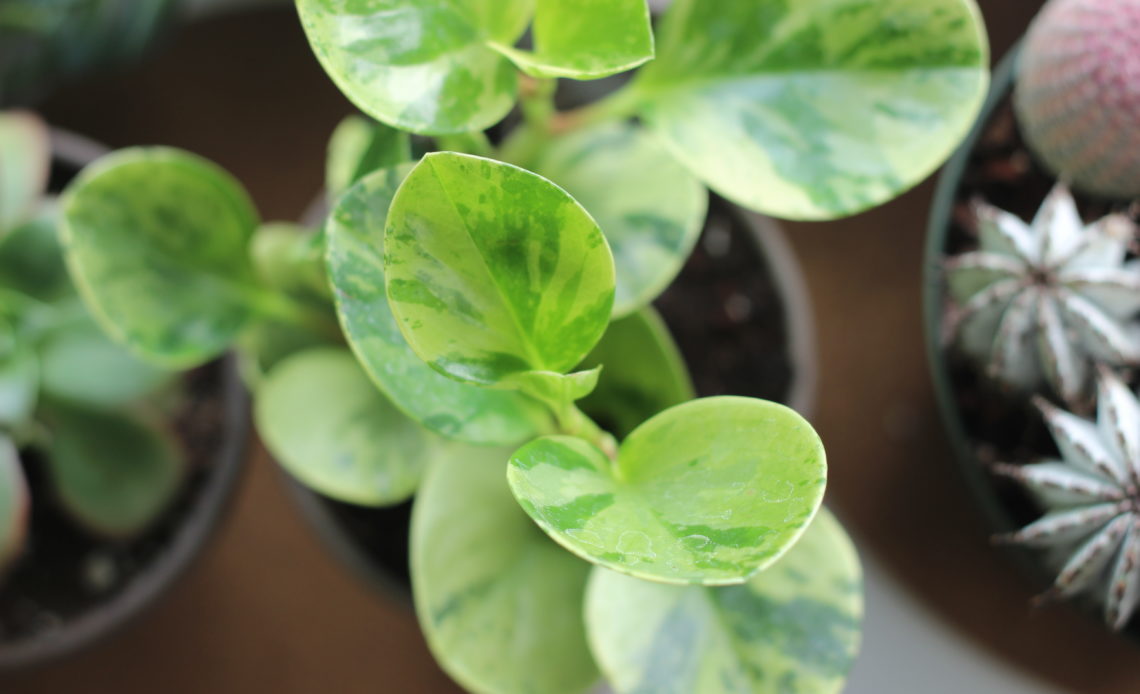
Radiator Plant:
I went to the greenhouse looking for a begonia but instead came home with the sweetest Peperomia obtusifolia. Peperomia is a very large genus boasting over a thousand recorded species ranging from Central America to Southern America. It’s hard to pinpoint just one characteristic shared across species because there are just too many variations. They are typically compact plants that don’t grow over 12″. Some are trailing, some have stalk-like stems and then some are more fleshly. Their leaf shape can vary from plant to plant with heart-shaped leaves, round leaves, teardrop leaves, smooth leaves, fleshy leaves, and even some with an epidermal window.
Some peperomia are semi-succulent and as such, they need bright light and well-draining soil. For this reason, when I potted up my new plant, I used a pot that was similar in size to the one it came in and mixed up a little soil that was about a handful of potting mix, a handful of the cactus mix and I threw in some coarse gravel to encourage airflow and drainage. I also chose a simple terracotta pot that helps wick away moisture after watering. Not all peperomia are semi-succulent, so take this into consideration when bringing one home.
Care:
This particular Peperomia has variegated leaves, which means I will need to pay special attention to the light. Any plant or succulent with variegated leaves will require more intense sunlight. Why? The less green on the leaves means the plant has to work that much harder to grow and photosynthesize. The greener the plant, the further away from the light it can live. If I were to put this peperomia in a low lit area, it would lose its beautiful coloration and turn solid green. That being said, if I move it back to high light, new growth would sprout in its beautiful variegated patterns.
Peperomia is easy to propagate from leaf or stem cutting making this plant a great friendship plant. With all the variations in color and texture, ease of care and compact size, the peperomia is almost like the perfect house plant.
Epidermal Window: Also, known as a leaf window, an epidermal window is a specialized “window” in the leaf structure that absorbs sunlight and aids in photosynthesis. Most common in succulents such as Fenestraria Aurantiaca
Obtusifolia: Refers to the obtuse shape or rounded shape of the leaves


2 Comments